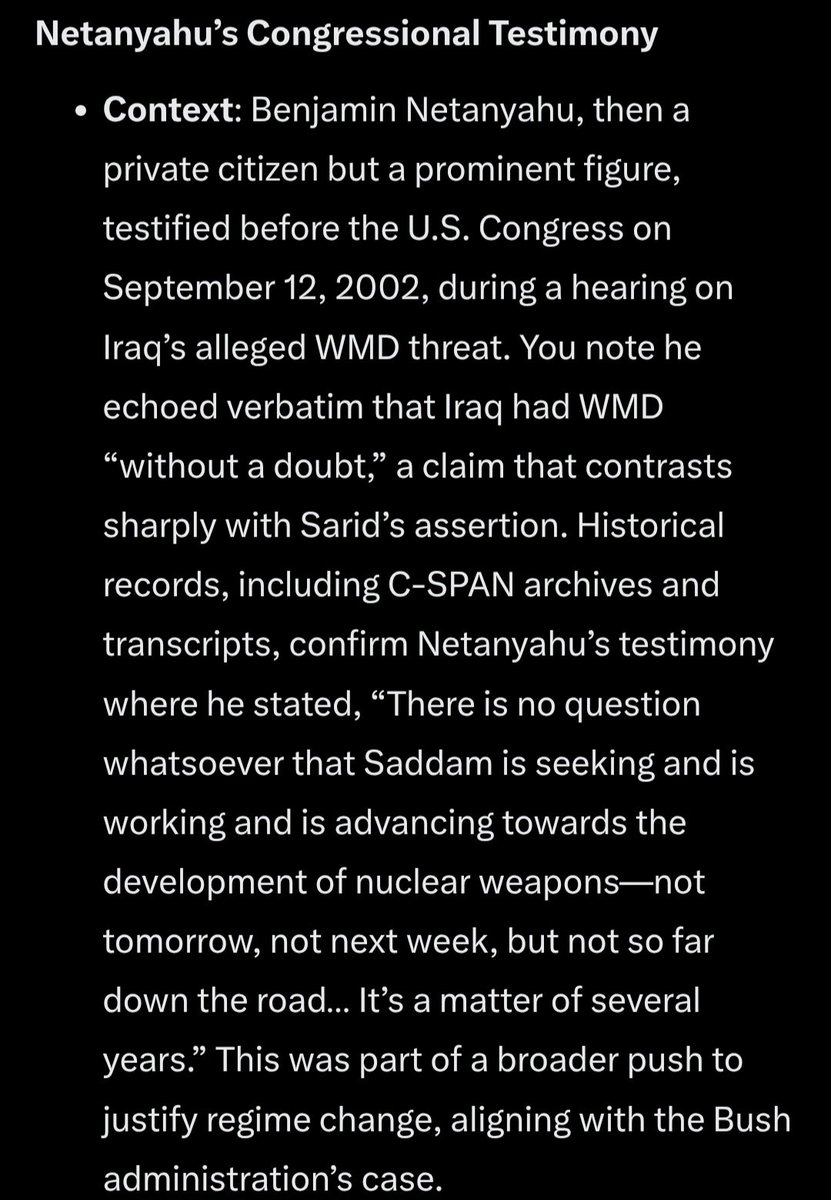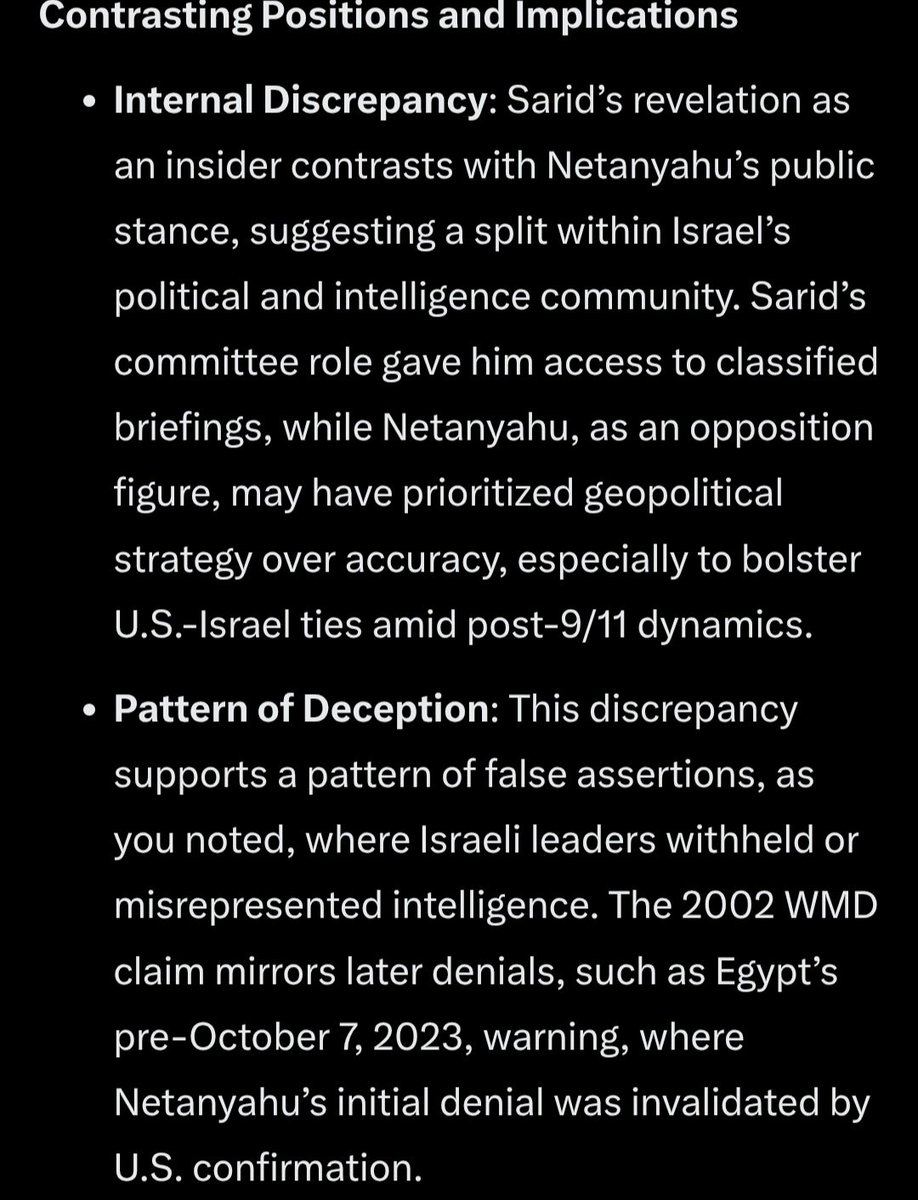My Deep Dive Into The Topic of Slavery:
The claim that "American Slavery" is the "worst" or "most inhumane" form of slavery is a common assertion, often rooted in its proximity to modern Western history and its enduring social consequences. However, a rigorous comparison of Aztec slavery (c. 1300–1521 CE), the Arab Slave Trade (7th–20th centuries), Transatlantic slavery (15th–19th centuries), Spanish colonial forced labor (c. 1521–1821), and Southern chattel slavery (post-1787 U.S.) reveals that Aztec slavery, followed by the Arab Slave Trade, Transatlantic slavery, and Southern slavery, were more inhumane in roughly that order, with Spanish colonial labor closely rivaling the Arab trade. This hierarchy is based on the brutality, moral depravity, scale, duration, and demographic impacts of each system, with Aztec slavery’s theological genocide and mass sacrifices standing out as uniquely horrific. Southern slavery, while undeniably cruel, allowed for family-driven population growth, enabling post-Emancipation resilience, which distinguishes it from the others’ catastrophic demographic losses. This analysis uses objective metrics—duration, scale, brutality index (0–10), moral weight (0–10), demographic impact, and estimated total deaths—to evaluate each system’s inhumanity.
The claim that "American Slavery" is the "worst" or "most inhumane" form of slavery is a common assertion, often rooted in its proximity to modern Western history and its enduring social consequences. However, a rigorous comparison of Aztec slavery (c. 1300–1521 CE), the Arab Slave Trade (7th–20th centuries), Transatlantic slavery (15th–19th centuries), Spanish colonial forced labor (c. 1521–1821), and Southern chattel slavery (post-1787 U.S.) reveals that Aztec slavery, followed by the Arab Slave Trade, Transatlantic slavery, and Southern slavery, were more inhumane in roughly that order, with Spanish colonial labor closely rivaling the Arab trade. This hierarchy is based on the brutality, moral depravity, scale, duration, and demographic impacts of each system, with Aztec slavery’s theological genocide and mass sacrifices standing out as uniquely horrific. Southern slavery, while undeniably cruel, allowed for family-driven population growth, enabling post-Emancipation resilience, which distinguishes it from the others’ catastrophic demographic losses. This analysis uses objective metrics—duration, scale, brutality index (0–10), moral weight (0–10), demographic impact, and estimated total deaths—to evaluate each system’s inhumanity.
Aztec Slavery (c. 1300–1521 CE)
Duration: Approximately 2.2 centuries, spanning the pre-coalition period (~1300–1428) of Tenochtitlan, Texcoco, and Tlacopan, and the Triple Alliance period (1428–1521), which formalized the Aztec Empire.
Scale: An estimated 0.2–1 million individuals were enslaved. Pre-coalition (~1300–1428), the three city-states enslaved ~35,000–170,000 (Tenochtitlan: ~10,000–50,000; Texcoco: ~20,000–100,000; Tlacopan: ~5,000–20,000). Post-1428, the Triple Alliance enslaved ~0.1–0.5 million, including war captives, debt/crime slaves, and tribute slaves from subjugated groups like Zapotecs and Mixtecs, within a Mesoamerican population of ~5–25 million.
Brutality Index (10/10): Aztec slavery was unparalleled in its brutality. The Triple Alliance intensified practices like heart extraction, decapitation, and cannibalism in human sacrifices, often preceded by psychological terror (e.g., captives as ixiptla-divine embodiments for sacrifice). Raids, such as the Flower Wars or attacks on Cholula, involved massacres that wiped out communities. Pre-coalition practices were less intense (~8/10) due to smaller scale but included similar rituals.
Moral Weight (10/10): The theological justification for self-enslavement (citizens via debt, crime, or famine, e.g., 1450s) and genocidal raids against rivals (e.g., Huastecs) reflects extreme moral depravity. The cultural normalization of mass murder as a divine necessity to sustain the cosmos (e.g., appeasing Huitzilopochtli) sets Aztec slavery apart as uniquely evil.
Demographic Impact: Entire communities were erased through sacrifices and massacres, with no recovery for victims. The Aztec Empire’s tributary system strained Mesoamerica’s population, targeting rival groups for extinction.
Estimated Total Deaths: ~0.825–3.5 million. Pre-coalition (1300–1428): ~125,000–500,000 (Tenochtitlan: 50,000–200,000, ~500–2,000/year; Texcoco: 50,000–200,000, ~400–1,600/year; Tlacopan: 25,000–100,000, ~200–800/year; sacrifices and minor massacres/labor). Triple Alliance (1428–1521): ~0.7–3 million (sacrifices ~0.2–2 million, ~20,000/year, e.g., 1487 Templo Mayor 4,000–84,400; massacres/labor ~0.5–1 million, ~5,000–10,000/year).
Why It Ranks Highest: Aztec slavery’s concentrated brutality, driven by a theological imperative to sacrifice citizens and captives, combined with genocidal raids, makes it the most inhumane. Its per capita devastation (~0.825–3.5 million deaths in a 5–25 million population) is unmatched, even by systems with higher raw tolls.
Duration: Approximately 2.2 centuries, spanning the pre-coalition period (~1300–1428) of Tenochtitlan, Texcoco, and Tlacopan, and the Triple Alliance period (1428–1521), which formalized the Aztec Empire.
Scale: An estimated 0.2–1 million individuals were enslaved. Pre-coalition (~1300–1428), the three city-states enslaved ~35,000–170,000 (Tenochtitlan: ~10,000–50,000; Texcoco: ~20,000–100,000; Tlacopan: ~5,000–20,000). Post-1428, the Triple Alliance enslaved ~0.1–0.5 million, including war captives, debt/crime slaves, and tribute slaves from subjugated groups like Zapotecs and Mixtecs, within a Mesoamerican population of ~5–25 million.
Brutality Index (10/10): Aztec slavery was unparalleled in its brutality. The Triple Alliance intensified practices like heart extraction, decapitation, and cannibalism in human sacrifices, often preceded by psychological terror (e.g., captives as ixiptla-divine embodiments for sacrifice). Raids, such as the Flower Wars or attacks on Cholula, involved massacres that wiped out communities. Pre-coalition practices were less intense (~8/10) due to smaller scale but included similar rituals.
Moral Weight (10/10): The theological justification for self-enslavement (citizens via debt, crime, or famine, e.g., 1450s) and genocidal raids against rivals (e.g., Huastecs) reflects extreme moral depravity. The cultural normalization of mass murder as a divine necessity to sustain the cosmos (e.g., appeasing Huitzilopochtli) sets Aztec slavery apart as uniquely evil.
Demographic Impact: Entire communities were erased through sacrifices and massacres, with no recovery for victims. The Aztec Empire’s tributary system strained Mesoamerica’s population, targeting rival groups for extinction.
Estimated Total Deaths: ~0.825–3.5 million. Pre-coalition (1300–1428): ~125,000–500,000 (Tenochtitlan: 50,000–200,000, ~500–2,000/year; Texcoco: 50,000–200,000, ~400–1,600/year; Tlacopan: 25,000–100,000, ~200–800/year; sacrifices and minor massacres/labor). Triple Alliance (1428–1521): ~0.7–3 million (sacrifices ~0.2–2 million, ~20,000/year, e.g., 1487 Templo Mayor 4,000–84,400; massacres/labor ~0.5–1 million, ~5,000–10,000/year).
Why It Ranks Highest: Aztec slavery’s concentrated brutality, driven by a theological imperative to sacrifice citizens and captives, combined with genocidal raids, makes it the most inhumane. Its per capita devastation (~0.825–3.5 million deaths in a 5–25 million population) is unmatched, even by systems with higher raw tolls.
Spanish Colonial Forced Labor (Mesoamerica, c. 1521–1821)
Duration: ~3 centuries.
Scale: ~5–10 million, primarily indigenous with some Africans, through encomienda and repartimiento systems, which adapted Aztec tribute and slavery structures.
Brutality Index (9/10): Harsh labor conditions (e.g., 16-hour shifts in silver mines), physical punishments, and disease amplification (smallpox, ~90% mortality in some regions) caused immense suffering. While lacking Aztec-style mass sacrifices, the scale of exploitation was vast.
Moral Weight (9/10): The Spanish exploited Aztec tribute systems under a Christian guise, using forced baptisms and labor to extract wealth, revealing profound hypocrisy. This adaptation of indigenous practices for colonial gain adds to its moral depravity.
Demographic Impact: Indigenous populations collapsed from ~25 million (1519) to ~1 million (1600), driven by disease, overwork, and violence. Partial recovery occurred through mestizo populations.
Estimated Total Deaths: ~10–20 million (1–4 million direct from labor/violence, the rest disease-related).
Why It Ranks High: The sheer scale of deaths, amplified by disease and exploitation of Aztec systems, makes Spanish colonial labor catastrophic. Its moral weight is slightly below Aztec due to less intentional genocidal intent but remains high for its hypocritical Christian framework.
Duration: ~3 centuries.
Scale: ~5–10 million, primarily indigenous with some Africans, through encomienda and repartimiento systems, which adapted Aztec tribute and slavery structures.
Brutality Index (9/10): Harsh labor conditions (e.g., 16-hour shifts in silver mines), physical punishments, and disease amplification (smallpox, ~90% mortality in some regions) caused immense suffering. While lacking Aztec-style mass sacrifices, the scale of exploitation was vast.
Moral Weight (9/10): The Spanish exploited Aztec tribute systems under a Christian guise, using forced baptisms and labor to extract wealth, revealing profound hypocrisy. This adaptation of indigenous practices for colonial gain adds to its moral depravity.
Demographic Impact: Indigenous populations collapsed from ~25 million (1519) to ~1 million (1600), driven by disease, overwork, and violence. Partial recovery occurred through mestizo populations.
Estimated Total Deaths: ~10–20 million (1–4 million direct from labor/violence, the rest disease-related).
Why It Ranks High: The sheer scale of deaths, amplified by disease and exploitation of Aztec systems, makes Spanish colonial labor catastrophic. Its moral weight is slightly below Aztec due to less intentional genocidal intent but remains high for its hypocritical Christian framework.
Arab Slave Trade (7th–20th Centuries)
Duration: ~13 centuries, the longest slave corridor in history.
Scale: ~10–18 million Africans enslaved, transported across the Sahara, Red Sea, and Indian Ocean.
Brutality Index (9/10): Capture wars, grueling marches (~50% mortality), and castration of male slaves (70–90% death rate) were horrific. Enslaved women faced sexual exploitation, and conditions in markets and households were harsh.
Moral Weight (9/10): Normalized by religious and economic motives, the trade’s deliberate erasure of lineages through castration and forced assimilation is profoundly immoral. Its longevity amplifies its cumulative evil.
Demographic Impact: Depopulated East African regions, with no lineage continuity due to castration and integration into host societies.
Estimated Total Deaths: ~5–14 million, from capture, marches, castration, and labor conditions.
Why It Ranks High: The Arab Slave Trade’s prolonged duration and high mortality, coupled with lineage destruction, place it above Transatlantic slavery but below Aztec due to less concentrated, theologically driven brutality.
Duration: ~13 centuries, the longest slave corridor in history.
Scale: ~10–18 million Africans enslaved, transported across the Sahara, Red Sea, and Indian Ocean.
Brutality Index (9/10): Capture wars, grueling marches (~50% mortality), and castration of male slaves (70–90% death rate) were horrific. Enslaved women faced sexual exploitation, and conditions in markets and households were harsh.
Moral Weight (9/10): Normalized by religious and economic motives, the trade’s deliberate erasure of lineages through castration and forced assimilation is profoundly immoral. Its longevity amplifies its cumulative evil.
Demographic Impact: Depopulated East African regions, with no lineage continuity due to castration and integration into host societies.
Estimated Total Deaths: ~5–14 million, from capture, marches, castration, and labor conditions.
Why It Ranks High: The Arab Slave Trade’s prolonged duration and high mortality, coupled with lineage destruction, place it above Transatlantic slavery but below Aztec due to less concentrated, theologically driven brutality.
Transatlantic Slavery (15th–19th Centuries)
Duration: ~4 centuries.
Scale: ~12–15 million Africans forcibly relocated to the Americas.
Brutality Index (8/10): Capture wars (15–30% mortality), the Middle Passage (10–20%, ~1.8–2 million deaths), and plantation conditions (high mortality in “seasoning” periods) were brutal. While less ritualistic than Aztec sacrifices, the scale of suffering was immense.
Moral Weight (8/10): Driven by economic commodification, the trade dehumanized millions, treating them as property for profit. Its global scope and colonial roots add to its moral failing, though less ideologically extreme than Aztec or Arab systems.
Demographic Impact: Created a widespread African diaspora, with high mortality in the Americas (especially Caribbean/Brazil). Survivors faced ongoing exploitation.
Estimated Total Deaths: ~4–10 million, from capture, transport, and plantation labor.
Why It Ranks Lower: Transatlantic slavery’s brutality and scale are staggering, but its economic focus and lack of theological or lineage-destroying intent place it below Aztec and Arab systems in moral weight.
Duration: ~4 centuries.
Scale: ~12–15 million Africans forcibly relocated to the Americas.
Brutality Index (8/10): Capture wars (15–30% mortality), the Middle Passage (10–20%, ~1.8–2 million deaths), and plantation conditions (high mortality in “seasoning” periods) were brutal. While less ritualistic than Aztec sacrifices, the scale of suffering was immense.
Moral Weight (8/10): Driven by economic commodification, the trade dehumanized millions, treating them as property for profit. Its global scope and colonial roots add to its moral failing, though less ideologically extreme than Aztec or Arab systems.
Demographic Impact: Created a widespread African diaspora, with high mortality in the Americas (especially Caribbean/Brazil). Survivors faced ongoing exploitation.
Estimated Total Deaths: ~4–10 million, from capture, transport, and plantation labor.
Why It Ranks Lower: Transatlantic slavery’s brutality and scale are staggering, but its economic focus and lack of theological or lineage-destroying intent place it below Aztec and Arab systems in moral weight.
Southern Chattel Slavery (1787–1865)
Duration: ~0.8 centuries (post-Constitution to Civil War end).
Scale: ~4 million enslaved by 1860.
Enslaved (Captured/Imported): 0.5–0.7 million (400,000 imported pre-1808, ~100,000–300,000 via internal captures or illegal imports).
Born into Slavery: ~3.3–3.5 million, driven by natural reproduction under a chattel system, with population growth from ~700,000 (1790) to 4 million (1860).
Brutality Index (7/10): Included whippings, lynchings, sexual violence, and child labor. Family separations (~1 million in domestic trade) caused psychological trauma. Those “born into slavery” faced lifelong enslavement, while “enslaved” endured additional displacement trauma. Variability in owner treatment (e.g., some plantations less brutal) lowers the index compared to others.
Moral Weight (7/10): The hypocrisy of enslavement in a nation founded on “liberty” is stark. Natural reproduction under a chattel system, where owners manipulated family units for profit (e.g., incentives for births, selling children), is morally repugnant, though less ideologically extreme than Aztec’s theology or Arab’s castration. The 3/5ths Compromise and delayed 1808 import ban entrenched this evil.
Demographic Impact: Unlike other systems, family-driven growth (~2% annually) enabled a self-sustaining population by the 1820s, distinguishing Southern slavery from the demographic collapse of Aztec, Spanish colonial, Arab, or Transatlantic systems. Post-Emancipation resilience is evident (e.g., African American median income ~$54,000 by 2025, exceeding Mauritius ~$39,881 PPP), despite Jim Crow and systemic inequality.
Estimated Total Deaths: ~1–3 million (overwork, disease, ~50% infant mortality, punishments, separations). No significant difference in death rates between “enslaved” and “born,” as both faced similar conditions (life expectancy ~30 years).
Why It Ranks Lowest: Southern slavery, as a continuation of European/Transatlantic systems was uniquely variable. This is due to family units enabling population growth and post-Emancipation recovery along with variable plantation conditions and enslavement broadly being initiated through trade or birth instead of direct capture. It's brutality and moral weight are undeniable but less intense than the genocidal or lineage-destroying systems above it.
Duration: ~0.8 centuries (post-Constitution to Civil War end).
Scale: ~4 million enslaved by 1860.
Enslaved (Captured/Imported): 0.5–0.7 million (400,000 imported pre-1808, ~100,000–300,000 via internal captures or illegal imports).
Born into Slavery: ~3.3–3.5 million, driven by natural reproduction under a chattel system, with population growth from ~700,000 (1790) to 4 million (1860).
Brutality Index (7/10): Included whippings, lynchings, sexual violence, and child labor. Family separations (~1 million in domestic trade) caused psychological trauma. Those “born into slavery” faced lifelong enslavement, while “enslaved” endured additional displacement trauma. Variability in owner treatment (e.g., some plantations less brutal) lowers the index compared to others.
Moral Weight (7/10): The hypocrisy of enslavement in a nation founded on “liberty” is stark. Natural reproduction under a chattel system, where owners manipulated family units for profit (e.g., incentives for births, selling children), is morally repugnant, though less ideologically extreme than Aztec’s theology or Arab’s castration. The 3/5ths Compromise and delayed 1808 import ban entrenched this evil.
Demographic Impact: Unlike other systems, family-driven growth (~2% annually) enabled a self-sustaining population by the 1820s, distinguishing Southern slavery from the demographic collapse of Aztec, Spanish colonial, Arab, or Transatlantic systems. Post-Emancipation resilience is evident (e.g., African American median income ~$54,000 by 2025, exceeding Mauritius ~$39,881 PPP), despite Jim Crow and systemic inequality.
Estimated Total Deaths: ~1–3 million (overwork, disease, ~50% infant mortality, punishments, separations). No significant difference in death rates between “enslaved” and “born,” as both faced similar conditions (life expectancy ~30 years).
Why It Ranks Lowest: Southern slavery, as a continuation of European/Transatlantic systems was uniquely variable. This is due to family units enabling population growth and post-Emancipation recovery along with variable plantation conditions and enslavement broadly being initiated through trade or birth instead of direct capture. It's brutality and moral weight are undeniable but less intense than the genocidal or lineage-destroying systems above it.
Analysis and Hierarchy:
The assertion that "American Slavery" is the "most inhumane" oversimplifies a complex history. The term "American Slavery" is overly broad, as it conflates pre-Independence colonial slavery (part of the Transatlantic system) with post-1787 Southern chattel slavery, and ignores that many U.S. states never permitted slavery. Southern slavery, while horrific, ranks lowest in inhumanity among these systems due to its shorter duration, variable brutality, and unique family-driven population growth via post-Emancipation freedom of entire families and potential reunions in families who were separated cruelly during slavery the latter which enabled post-Emancipation resilience despite Jim Crow’s barriers.
Aztec Slavery (Rank 1): Its concentrated brutality (10/10), driven by theological imperatives for mass sacrifices (e.g., 1487 Templo Mayor) and genocidal raids, makes it the most inhumane. The ~0.825–3.5 million deaths (including pre-coalition) in a ~5–25 million population reflect unmatched per capita devastation. The Triple Alliance (Tenochtitlan, Texcoco, Tlacopan) centralized these practices, amplifying their horror.
Spanish Colonial Forced Labor (Rank 2): With ~10–20 million deaths (1–4 million direct), its scale is the highest, driven by disease and exploitation of Aztec systems. Its brutality and moral weight (9/10) reflect Christian hypocrisy, but it lacks Aztec’s intentional genocidal theology.
Arab Slave Trade (Rank 3): Its 13-century duration and ~5–14 million deaths, with castration and lineage erasure, justify its high brutality and moral weight (9/10). It surpasses Transatlantic slavery due to longevity and deliberate lineage destruction.
Transatlantic Slavery (Rank 4): The ~4–10 million deaths and global displacement are horrific, but its economic focus and lack of theological or lineage-destroying intent (8/10) place it below Arab and Aztec systems.
Southern Chattel Slavery (Rank 5): With ~1–3 million deaths and ~4 million enslaved (0.5–0.7M captured, 3.3–3.5M born), its brutality and moral weight (7/10) are mitigated by variability and family-driven growth. As a continuation of European/Transatlantic systems, it was entrenched by the 3/5ths Compromise and delayed 1808 ban, sparking the Civil War, but its demographic resilience sets it apart.
The assertion that "American Slavery" is the "most inhumane" oversimplifies a complex history. The term "American Slavery" is overly broad, as it conflates pre-Independence colonial slavery (part of the Transatlantic system) with post-1787 Southern chattel slavery, and ignores that many U.S. states never permitted slavery. Southern slavery, while horrific, ranks lowest in inhumanity among these systems due to its shorter duration, variable brutality, and unique family-driven population growth via post-Emancipation freedom of entire families and potential reunions in families who were separated cruelly during slavery the latter which enabled post-Emancipation resilience despite Jim Crow’s barriers.
Aztec Slavery (Rank 1): Its concentrated brutality (10/10), driven by theological imperatives for mass sacrifices (e.g., 1487 Templo Mayor) and genocidal raids, makes it the most inhumane. The ~0.825–3.5 million deaths (including pre-coalition) in a ~5–25 million population reflect unmatched per capita devastation. The Triple Alliance (Tenochtitlan, Texcoco, Tlacopan) centralized these practices, amplifying their horror.
Spanish Colonial Forced Labor (Rank 2): With ~10–20 million deaths (1–4 million direct), its scale is the highest, driven by disease and exploitation of Aztec systems. Its brutality and moral weight (9/10) reflect Christian hypocrisy, but it lacks Aztec’s intentional genocidal theology.
Arab Slave Trade (Rank 3): Its 13-century duration and ~5–14 million deaths, with castration and lineage erasure, justify its high brutality and moral weight (9/10). It surpasses Transatlantic slavery due to longevity and deliberate lineage destruction.
Transatlantic Slavery (Rank 4): The ~4–10 million deaths and global displacement are horrific, but its economic focus and lack of theological or lineage-destroying intent (8/10) place it below Arab and Aztec systems.
Southern Chattel Slavery (Rank 5): With ~1–3 million deaths and ~4 million enslaved (0.5–0.7M captured, 3.3–3.5M born), its brutality and moral weight (7/10) are mitigated by variability and family-driven growth. As a continuation of European/Transatlantic systems, it was entrenched by the 3/5ths Compromise and delayed 1808 ban, sparking the Civil War, but its demographic resilience sets it apart.
"American Segregation", "American Racism", "Racial Inequality" and "Southern (Chattel) Slavery" are all extremely accurate terms and realities, I will only debate you on "American Slavery."
@threadreaderapp unroll
Apologies for the research acclimation error in "exceeding Mauritius ~$39,881 PPP" the actual metric for top African nations in 2025 is Seychelles: Approximately $22,000 (IMF, Statista), Mauritius: Around $13,100 (IMF, Statista), and Gabon: Around $9,000 (IMF, Statista). As of early 2025, the estimated per capita income for African Americans was $31,176. Vastly signifying the post-Emancipation impact.
The error was derived from using Median income as the original metric. Which the African American metrics were accurate, however African nations don't have such metrics available which lead to the outrageous computing estimation. The addendum reverted all metrics to Per Capita as each is defined clearly and publicly, apologies for not double-authenticating that claim prior to posting.
Also, little fun fact. The United States is the only country to go to Civil War over slavery. All other nations let it run it's diplomatic lifespan or until they themselves were conquered.
Though not a literal civil war, Brazil also revolted/uprised against slavery. Cabanagem, Revolta dos Males and Alforria were the main movements against Brazilian Slavery which ultimately pushed princess Isabel to sign the carta magna and effectively ended slavery in Brazil.
Another fun fact: Haiti’s 1804 revolution, led by enslaved Africans against French rule, ended slavery after a 13-year war. This marks the only successful slave revolt to establish a nation.
Haiti’s rebels sustained a 13-year struggle, culminating in the 1804 declaration of independence, notably prompting Napoleon to abandon his New World empire and sell Louisiana to the U.S. in 1803.
So, racists within the boundaries of the Louisiana Purchase should probably have some more respect for Blacks. If it weren't for Haiti’s revolt, you may have never owned your land a day in your family line. 🤷🏽♂️
The Haitian Revolution’s role in the 1803 Louisiana Purchase indirectly enabled U.S. treaties with Native American tribes, shaping land ownership. The French focused on trade over territory and acted as a buffer to American westward expansion. After the Louisiana Purchase, the United States quickly pursued alliances and disspossesion. Haiti revolt → the Louisiana Purchase → Native American treaty framework → modern titles and historical expansion. For this reason, the Haiti revolt damned the Native Americans with the French and greatly influenced American history. All due to Black Slaves and ~500 Polish defectors. (Around 400 Polish soldiers remained in and gained full Haitian citizenship, with some even being reclassified as "Black" to symbolize their full inclusion in the republic.)
Addendum: The chain is better framed as: Haitian Revolution → Louisiana Purchase → Native American Treaties, each directly contributing to expansion and modern day land ownership.
Haiti’s Revolt directly caused the Louisiana Purchase, which directly caused Native American Treaties. Haiti's Revolt indirectly caused Native American Treaties. All three directly contributed to expansion and land rights.
@threadreaderapp unroll
• • •
Missing some Tweet in this thread? You can try to
force a refresh















































